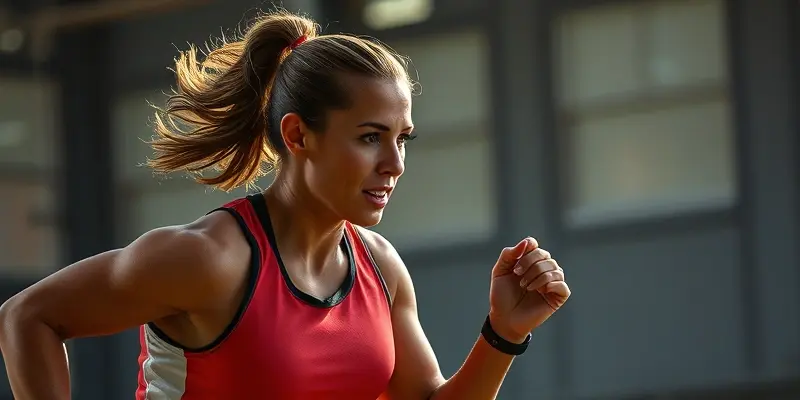Rising Strong: Recovery, Injury, and Leadership—Lessons from Abby Wambach
Injury can be a crushing blow for anyone committed to fitness or sports, from weekend warriors to pro athletes. Yet, it’s often in these moments that champions are forged—not just on the field, but in recovery, mindset, and leadership. Abby Wambach, legendary U.S. soccer striker, provides an inspiring blueprint for bouncing back stronger. Let’s explore her story and unpack practical strategies to help you recover wisely and build resilience, no matter your starting point.
Abby Wambach’s Comeback Story
The Incident and Impact
Abby Wambach—a name synonymous with gutsy play and clutch goals—faced a career-altering setback in 2008. A brutal collision during a pre-Olympic match left her with fractured tibia and fibula, sidelining her from the Beijing Games and requiring surgery with a titanium rod.
Response: Team-First Leadership
What set Wambach apart wasn’t just her scoring record, but her mindset in adversity. Despite her own disappointment, she supported teammates, urging her replacement to play with confidence. Abby maintained belief in her squad and stayed deeply involved with their success, role modeling emotional strength and team-first thinking.
Comeback with Purpose
Her recovery was not linear. It took more than a year to fully regain comfort and performance levels, reflecting both the physical and mental toll of major injury. Yet, she returned, scoring her 100th international goal in record time—a testament to effective rehab and unshakeable determination.
The Science of Recovery—Lessons from the Field
Common Injuries in Soccer and Fitness
Soccer athletes, like fitness enthusiasts everywhere, face risks from:
- Bone fractures (tibia, fibula)
- Ankle sprains
- Knee ligament injuries (ACL tears)
Wambach’s experience mirrors what many face: injuries are not just physical setbacks, but mental and strategic challenges too.
Prevention: Build the Foundation
Injury prevention is multi-faceted:
- Strength and flexibility: Focus especially on the legs, hips, and core through structured workouts and regular stretching.
- Proper warm-ups and cool-downs: These prepare muscles, help tissue elasticity, and reduce strains.
- Appropriate gear: Quality footwear ensures support and traction.
- Scheduled rest: Recovery time between intense efforts is crucial for tissue repair.
Abby’s Rehab Approach
Wambach’s faster comeback is credited to:
- Strict medical guidance
- Hormonic physical therapy
- Mental resilience: She accepted the mental battle, using support systems and visualization to restore confidence.
Actionable Recovery Tips for Every Athlete
Step-by-Step Guide
- Immediate Care: For bone or ligament injuries, seek medical assessment. Rest and immobilize promptly.
- Controlled Return: Gradually reintroduce movement, supervised by a physiotherapist.
- Physical Therapy: Focus on restoring range of motion, strength, and proprioception (your body’s sense of where it is in space).
- Progress Monitoring: Use pain and function—not just the calendar—to decide on next activity steps.
Nutrition for Recovery
- Protein: Essential for muscle repair.
- Calcium and Vitamin D: Support bone healing (calcium for bone strength).
- Antioxidants: Fight inflammation (antioxidants in sports nutrition).
Stay hydrated and avoid processed, highly inflammatory foods. Simple tools—like ice packs, compression sleeves, or even rehab apps—can aid the process.
Mental Motivation Toolkit
- Set small, achievable goals for each rehab stage.
- Lean on support: Coaches, teammates, or recovery buddies help maintain morale.
- Visualization: Imagine successful returns and movements to increase confidence and focus.
Turning Setbacks into Strength—The Long Game
Growth Mindset
Wambach often urges young athletes to see adversity as a chance to grow. Injuries, while frustrating, can deepen your understanding of your body and your sport.
Keep Your Motivation High
- Celebrate milestones—no matter how small.
- Balance workload: Don’t rush; gradual loading helps prevent re-injury.
- Maintain perspective: Downtime is often temporary, and smart recovery minimizes risk of future setbacks.
Conclusion: Be Your Own Comeback Story
Injury is never just “bad luck”—it’s an opportunity to lead, learn, and return stronger. Abby Wambach’s journey teaches us that recovery is about more than just bones and muscles—it’s about community, commitment, and courage.
Embrace setbacks as essential chapters in your athletic story. Prioritize prevention, respect the rehab process, and support others along their journey. Whether you’re aiming for your first 5K or your next championship, these evidence-based strategies will help you rise strong—on the field, in the gym, and beyond.
Curious about more expert tips on fitness and injury recovery? Explore GymPulse Club’s resources—your wellness, our passion.

